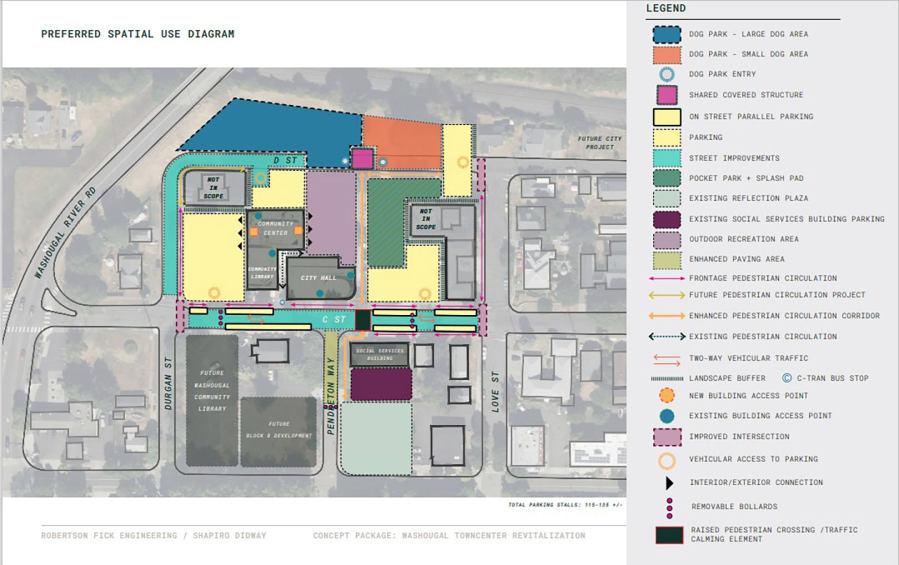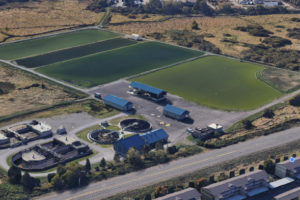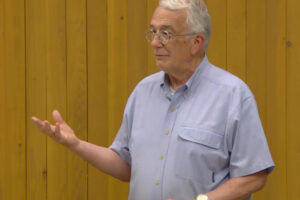Washougal City Council members are leaning toward one design option for the city of Washouggal’s future Town Center Revitalization Project, but said they will require more detailed information before making a final decision.
On Nov. 20, representatives from the engineering and landscape architecture firms the City hired to design the project revealed their initial diagrams and estimated timeline to the Washougal City Council.
“We’re really excited about jump-starting this and getting this project going,” Washougal Mayor David Stuebe said. “Our community is really excited about this. This is going to be huge for us, and we want to do it right. … (But the discussions are) premature right now. We’ve got a lot of questions.”
City officials introduced their plans for the project in May 2022, telling Council members that an enhanced civic center will provide vital enhancements to the quality of life in Washougal and promote economic growth.
According to the City, the project will result in the creation of enhanced outdoor community space, an off-leash dog park, a pocket park with potential splash pad/water feature, and improved and expanded public parking near the Fort Vancouver Regional Library’s new library facility, the Washougal Community Center and City Hall.




